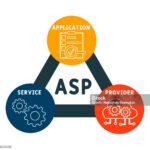An application system is an integrated unit of hardware and software components designed to solve specific operational tasks and problems within an organization. These systems are central to the digital infrastructure of businesses, supporting everything from administrative processes to core business functions.
The hardware component of an application system—see hardware—includes both computer hardware and peripherals (e.g., printers, scanners, external storage devices). The software component, referred to as application software, can be divided into standard software and custom software, according to Mertens et al. (2005).
Standard Software
Standard software is developed for the mass market and is generally hardware-independent, allowing for user-driven installation via self-installation routines. While standard software is designed to be broadly applicable, it can be partially customized to meet user needs through parameter settings, configuration, and interface development—without modifying the core program’s source code.
Mertens et al. (2005) distinguish four main subclasses of standard software:
-
Basic Software
Offers fundamental features such as email services, address book management, or virus protection. -
Standard Office Software
Includes tools that contributed significantly to the spread of personal computers. This category covers applications for word processing, presentations, desktop publishing, spreadsheets, databases, and web design. -
Function-Oriented Standard Software
Provides solutions for individual business functions or cross-functional tasks. According to Keller (1999), cross-functional integrated software is organized into modules that access a shared database. These are often referred to as Enterprise Resource Planning (ERP) systems by Hansen and Neumann (2005), with fluid boundaries between function-oriented and process-oriented software. -
Process-Oriented Application Software
Supports end-to-end business processes across multiple functional areas. Picot et al. (1998) associate this with workflow management systems, which enable the (partially automated) execution of business processes by sequencing tasks either in parallel or sequentially.
Custom Software
Custom software is tailored specifically to the unique operational needs of a business. According to Mertens et al. (2005), these programs are developed in-house or externally and are non-transferable to other contexts due to their high degree of specialization. While standard software may be modified to a limited extent, custom development involves building application logic from the ground up, offering maximum flexibility but also requiring significant technical and financial oversight.
An organization’s application systems may be developed internally—through the IT department or relevant business units—or outsourced. Effective management of these systems involves balancing technical complexity, cost efficiency, and scalability.
« Back to Glossary Index





![15 Employee Offboarding Templates That Save Hours of HR Time [Free Downloads] 15 Employee Offboarding Templates That Save Hours of HR Time [Free Downloads]](https://i1.wp.com/www.hrcloud.com/hubfs/Header.png?w=150&resize=150,100&ssl=1)
